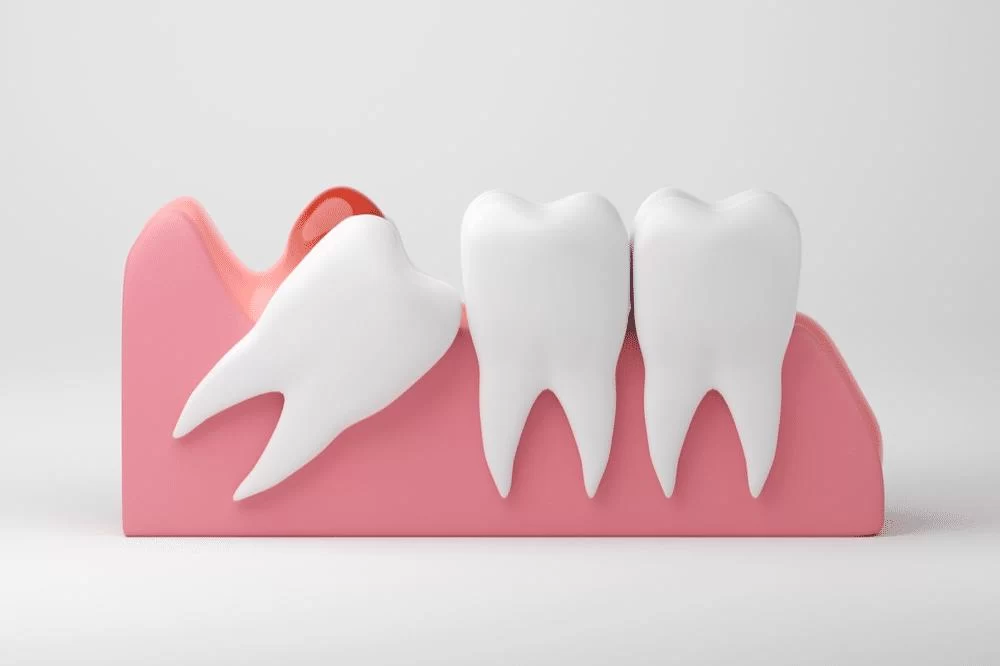
How to Treat an Infected Wisdom Tooth: Essential Steps and Tips for Relief
- 1. Understanding Wisdom Tooth Infections: Causes and Symptoms
- 2. Steps to Treat an Infected Wisdom Tooth: What You Need to Know
- 3. Home Remedies for Wisdom Tooth Infection: What Works?
- 4. Professional Treatment for Infected Wisdom Teeth
- 5. Real-Life Cases: How Proper Treatment Saved Teeth
- 6. Preventing Future Infections: How to Keep Your Wisdom Teeth Healthy
1. Understanding Wisdom Tooth Infections: Causes and Symptoms
An infected wisdom tooth can cause intense pain, swelling, and discomfort. This common dental issue typically occurs when a wisdom tooth becomes partially erupted or impacted, allowing bacteria to enter the surrounding gums. The infection can lead to a condition called a dental abscess, which is a painful pocket of pus that forms around the tooth.
Common symptoms of an infected wisdom tooth include:
- Severe pain in the back of the mouth
- Swelling or redness around the gums
- Pus or discharge from the affected area
- Bad breath or an unpleasant taste in the mouth
- Difficulty opening the mouth or swallowing
If you experience any of these symptoms, it's important to take action immediately to prevent the infection from worsening.
2. Steps to Treat an Infected Wisdom Tooth: What You Need to Know
When dealing with an infected wisdom tooth, early treatment is crucial to avoid complications. Here's a step-by-step guide to managing the infection:
- Rinse with Salt Water: A saltwater rinse can help reduce inflammation and flush out bacteria. Mix a teaspoon of salt with warm water and rinse your mouth gently, especially around the infected area.
- Apply a Cold Compress: If swelling is present, apply a cold compress to your cheek to reduce pain and inflammation. Be sure to not place ice directly on the skin; wrap it in a cloth first.
- Take Over-the-Counter Pain Relief: Non-prescription painkillers like ibuprofen can help reduce pain and inflammation while you wait for professional treatment.
- Keep the Area Clean: Gently brush your teeth and floss, but be cautious around the infected area to avoid aggravating the infection.
- Consult a Dentist: Even if symptoms are mild, it's important to see a dentist to assess the infection. If left untreated, the infection can spread and lead to more severe complications.
3. Home Remedies for Wisdom Tooth Infection: What Works?
While visiting a dentist is essential for treating an infected wisdom tooth, there are a few home remedies that can help alleviate the pain and symptoms in the short term:
Warm Saltwater Rinse
A saltwater rinse can be incredibly effective for soothing the inflamed gums and helping to flush out any bacteria. It’s a simple and inexpensive remedy you can do at home. Just make sure the water is not too hot, as that may further irritate the infection.
Clove Oil
Clove oil contains eugenol, a natural antiseptic that can help numb the pain and reduce inflammation. Apply a small amount of clove oil directly to the infected area using a cotton ball.
Tea Bags
Used tea bags can help reduce swelling and relieve pain. Chamomile or peppermint tea bags are especially helpful. Simply place a used, cooled tea bag on the affected area for about 15 minutes.
Hydrogen Peroxide Rinse
Hydrogen peroxide is a natural disinfectant and can help clean the area around the wisdom tooth. Mix it with water in a 1:1 ratio and rinse your mouth for about 30 seconds. Make sure not to swallow the solution.
4. Professional Treatment for Infected Wisdom Teeth
While home remedies can offer temporary relief, a dentist’s intervention is often necessary for a complete recovery. Depending on the severity of the infection and the condition of your wisdom tooth, your dentist may recommend one of the following professional treatments:
- Antibiotics: If the infection is mild, your dentist may prescribe antibiotics to help clear the infection. However, antibiotics alone may not be enough if the tooth needs to be extracted.
- Tooth Extraction: If the infection is severe or the tooth is impacted, your dentist may recommend removing the wisdom tooth. This is often the most effective solution for eliminating the infection and preventing future issues.
- Drainage of Abscess: In cases where an abscess has formed, your dentist may need to drain it to relieve pressure and reduce pain.
Regardless of the method chosen, it’s important to follow your dentist’s post-treatment care instructions to ensure proper healing and minimize the risk of reinfection.
5. Real-Life Cases: How Proper Treatment Saved Teeth
Consider the case of Sarah, a 32-year-old woman who came to our clinic with a severely infected wisdom tooth. She had been suffering from excruciating pain for days but had delayed treatment due to fear of a tooth extraction. After a thorough examination, we determined that the infection was spreading and needed immediate attention. Sarah underwent a safe extraction procedure, followed by a course of antibiotics, and has been pain-free since.
In another case, James, a 25-year-old male, experienced a mild infection around his wisdom tooth. He used home remedies like saltwater rinses and clove oil, but the infection didn’t fully subside. Upon visiting his dentist, he was prescribed antibiotics and received professional cleaning around the tooth. His infection cleared up without needing extraction.
6. Preventing Future Infections: How to Keep Your Wisdom Teeth Healthy
Preventing wisdom tooth infections starts with good oral hygiene. Here are some tips to avoid future issues:
- Brush and floss regularly, making sure to clean around your wisdom teeth.
- Consider regular check-ups with your dentist to monitor the health of your wisdom teeth.
- If your wisdom teeth are impacted or show signs of infection, discuss removal options with your dentist early to prevent future problems.
- Use a mouthwash that can help kill bacteria and reduce plaque buildup around your back teeth.
If you're dealing with an infected wisdom tooth and want professional advice or treatment options, visit Dentistry Toothtruth. Our team of experts can help you understand your treatment options and provide effective solutions to alleviate pain and prevent further complications. Learn more here.







 Teuscher Legacy Dental5.0 (326 review)
Teuscher Legacy Dental5.0 (326 review) Hillcrest Dental Group, P.A.4.0 (826 review)
Hillcrest Dental Group, P.A.4.0 (826 review) Aspen Dental - Naples, FL4.0 (420 review)
Aspen Dental - Naples, FL4.0 (420 review) Grady Dental Care5.0 (281 review)
Grady Dental Care5.0 (281 review) Isabel Correa DDS inc.3.0 (11 review)
Isabel Correa DDS inc.3.0 (11 review) Simply Beautiful Smiles of Thorndale, PA4.0 (100 review)
Simply Beautiful Smiles of Thorndale, PA4.0 (100 review) The Importance of Oral Health Education During Pregnancy for a Healthy Pregnancy
The Importance of Oral Health Education During Pregnancy for a Healthy Pregnancy Best Tips for Brushing Your Teeth Properly for Healthy Gums: Essential Techniques for Oral Health
Best Tips for Brushing Your Teeth Properly for Healthy Gums: Essential Techniques for Oral Health Why Skipping Dental Checkups Can Lead to Bigger Oral Health Problems
Why Skipping Dental Checkups Can Lead to Bigger Oral Health Problems Advantages of Porcelain Dental Restorations
Advantages of Porcelain Dental Restorations How Can Diabetes Cause Tooth and Gum Problems? Preventing and Managing Oral Health Issues
How Can Diabetes Cause Tooth and Gum Problems? Preventing and Managing Oral Health Issues Healthy Habits for Promoting Good Oral Health and Hygiene: Tips for a Healthy Smile
Healthy Habits for Promoting Good Oral Health and Hygiene: Tips for a Healthy Smile